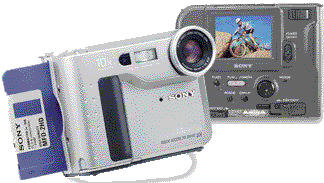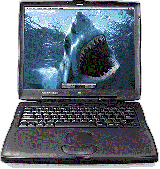
Expedition Equipment
For our Jungle to the Sea Expedition we are exploring the rainforests and coral reefs of the country of Belize, in Central America, by the Caribbean Sea. Expeditions require various types of equipment. The type of equipment required depends on a number of things that include: season, weather, altitude, locations, duration, etc.We will be scuba diving, hiking, and climbing. All the these things must be considered as we plan on the equipment we will need to make complete our expedition.
Think about past explorers and their expeditions. What were the pieces of equipment these explorers took with them? If these same explorers were making their expeditions today what are the modern pieces of equipment that these explorers probably take with them?
COBRA Kayak
COBRA TRAVELER KAYAK - This special sit-on-top boat is specially made for traveling. This kayak separates into three sections. Each section section is checked in at the airport as luggage! When we arrive we snap the sections together and we have a complete kayak! The sit-atop design allows us to easily get on and off the kayak to scuba dive.
![]()
PADDLES - We are the kayak motors and the paddles are our propellers. Kayaks paddles have paddles on both ends to make paddling easier and faster. Our Cobra Kayak paddles separate into four pieces so they can fit inside the Traveler kayak.
AQUA LUNG/ U.S. DIVERS CO. SCUBA Diving Equipment

MASK - This covers our eyes and nose lets us see clearly underwater.

SNORKEL - A special tube we breathe through while swimming on the surface.
![]()
FINS - These paddle-like shoes give us more power for swimming underwater.
![]()
WET SUIT - A rubber suit is worn to help keep us warm underwater and to protect us from getting cut or scratched. In Caribbean Sea we wear a very thin wet suit because the water here is so warm.
![]() AIR TANK - A metal container that safely holds that air we breathe underwater. When empty our air tank is refilled with a special air pump, called an air compressor.
AIR TANK - A metal container that safely holds that air we breathe underwater. When empty our air tank is refilled with a special air pump, called an air compressor.

REGULATOR - This gives us air from our air tank. We connect the regulator to the air tank and breathe from the regulator mouthpiece.

BUOYANCY COMPENSATOR (BC) - An inflatable vest we wear that allows us to control our buoyancy (floating and sinding) underwater. (A BC allows us to become neutrally buoyant underwater.) The BC is attached to our air tank and allows us to carry our air tank on our backs.
 DIVING COMPUTER - This is a special water-proof computer that we wear on our wrist. It tells us everything we need to dive safely. It shows us how much air is in our air tank, how deep we are, how long we have been underwater, when we must go back up to the surface, and how long we can stay underwater if we make another dive.
DIVING COMPUTER - This is a special water-proof computer that we wear on our wrist. It tells us everything we need to dive safely. It shows us how much air is in our air tank, how deep we are, how long we have been underwater, when we must go back up to the surface, and how long we can stay underwater if we make another dive.

COMPASS - We wear this on our wrists to help us find our way underwater.
![]() DIVE KNIFE - This is not a weapon. This is a tool we use underwater for cutting, prying, digging, pounding, measuring.
DIVE KNIFE - This is not a weapon. This is a tool we use underwater for cutting, prying, digging, pounding, measuring.

DIVER VEHICLE - An underwater scooter that pulls us through the water.
Underwater Camera Equipment
 NIKONOS UNDERWATER CAMERAS - Special cameras designed for taking still pictures underwater using film.
NIKONOS UNDERWATER CAMERAS - Special cameras designed for taking still pictures underwater using film.
NIKONOS UNDERWATER CAMERA LENSES - Nikonos underwater cameras have different lenses that can be changed for taking pictures of very large things (like manatees) very small things, or things very close up. THESE LENSES CANNOT BE CHANGED UNDERWATER!
SEA & SEA HOUSING FOR DIGITAL CAMERA - A special metal case that the digital camera goes inside. This case allows us to take the camera underwater and take the digital pictures that you see in our daily expedition journals.
UNDERWATER STROBES - Special camera flashes designed for use with the underwater cameras.
Above Water Camera Equipment

DIGITAL VIDEO/STILL CAMERA - A special camera for taking digital video and still digital pictures without film. The camera stores the video on a digital video tape and the digital still pictures on a tiny Memory Stick.
NIKON F100- A professional still camera that uses film to take picures.
NIKON CAMERA LENSES - Nikon cameras have different lenses that can be changed for taking picture of very large things, very small things, things far away or things very close up.
FILTERS - Filters screw onto the front of the camera lenses. Filters can protect the camera lenses from scratches, reduce glare from the sun (like sunglasses for camera lenses), add colors to our pictures, and allow us to do special effects photography.
FLASHES - Special strobe lights that allow us to take pictures in the dark, in the shade, or in dim light.
TRIPOD - A 3-legged stand that we can attach our camera to for taking pictures.
Navigati on Equipment
on Equipment
GPS - This instrument uses navigation satellites (Global Positioning Satellites), circleing the earth, to determine our exact position on the earth. Using position data this gps device maps our route, shows us the direction we are heading, our speed, how long until we reach our final destination, and who to return to our staring point. This gps device allows us to store location positions in its memory so we can return to locations again.
Computer Equipment
 LAPTOP COMPUTER - Our laptop computer alllows you to join us on our underwater expeditions. With this small, light computer we can: store and process the photos we take, draw pictures, write our teacher guides, record our data, use it as a calculator, send and receive email, design our and manage this web site, surf the web, watch movies, play games, and use it as a tape recorder. (Our computer has a hole in the side were we can plug in different devices like a floppy disc drive, and a CD-ROM drive.) Our computer is powered by a rechargable battery. We can plug our computer into our desktop computer at home to transfer files and information between both computers. Without this powerful, portable computer our interactive, Internet expedition would not be possible.
LAPTOP COMPUTER - Our laptop computer alllows you to join us on our underwater expeditions. With this small, light computer we can: store and process the photos we take, draw pictures, write our teacher guides, record our data, use it as a calculator, send and receive email, design our and manage this web site, surf the web, watch movies, play games, and use it as a tape recorder. (Our computer has a hole in the side were we can plug in different devices like a floppy disc drive, and a CD-ROM drive.) Our computer is powered by a rechargable battery. We can plug our computer into our desktop computer at home to transfer files and information between both computers. Without this powerful, portable computer our interactive, Internet expedition would not be possible.
FLOPPY DISC DRIVE - A device that allow our computer to read from and record on computer floppy disks. (Our computer has a removable floppy disc drive.)
CD-ROM DRIVE - A device that allow our computer only to read from CD-ROM's. Our CD-ROM drive can read computer CD-ROM's and also play music CD-ROM's and computer games CD-ROM's, too.(Our computer has a removable CD-ROM drive.)
